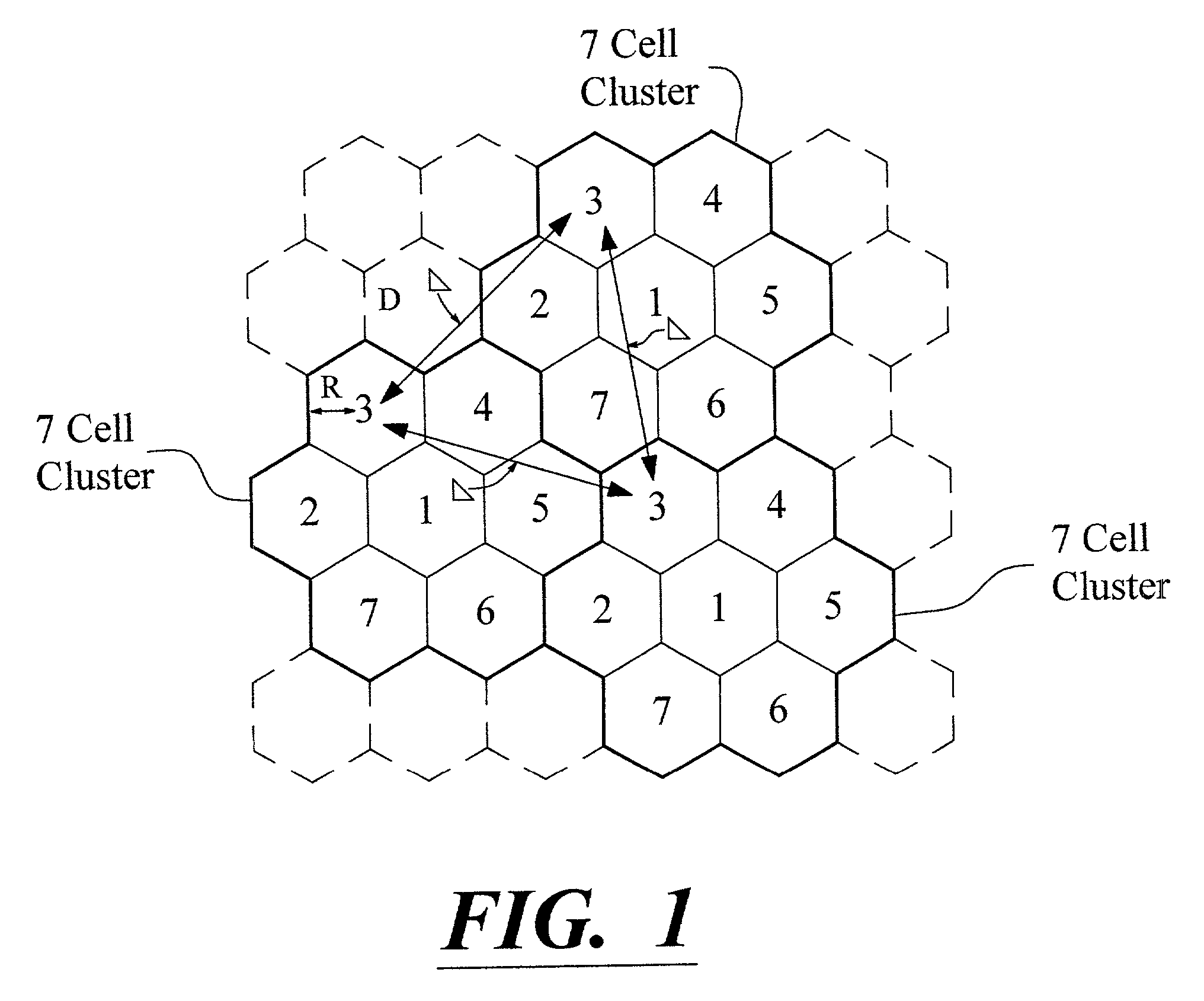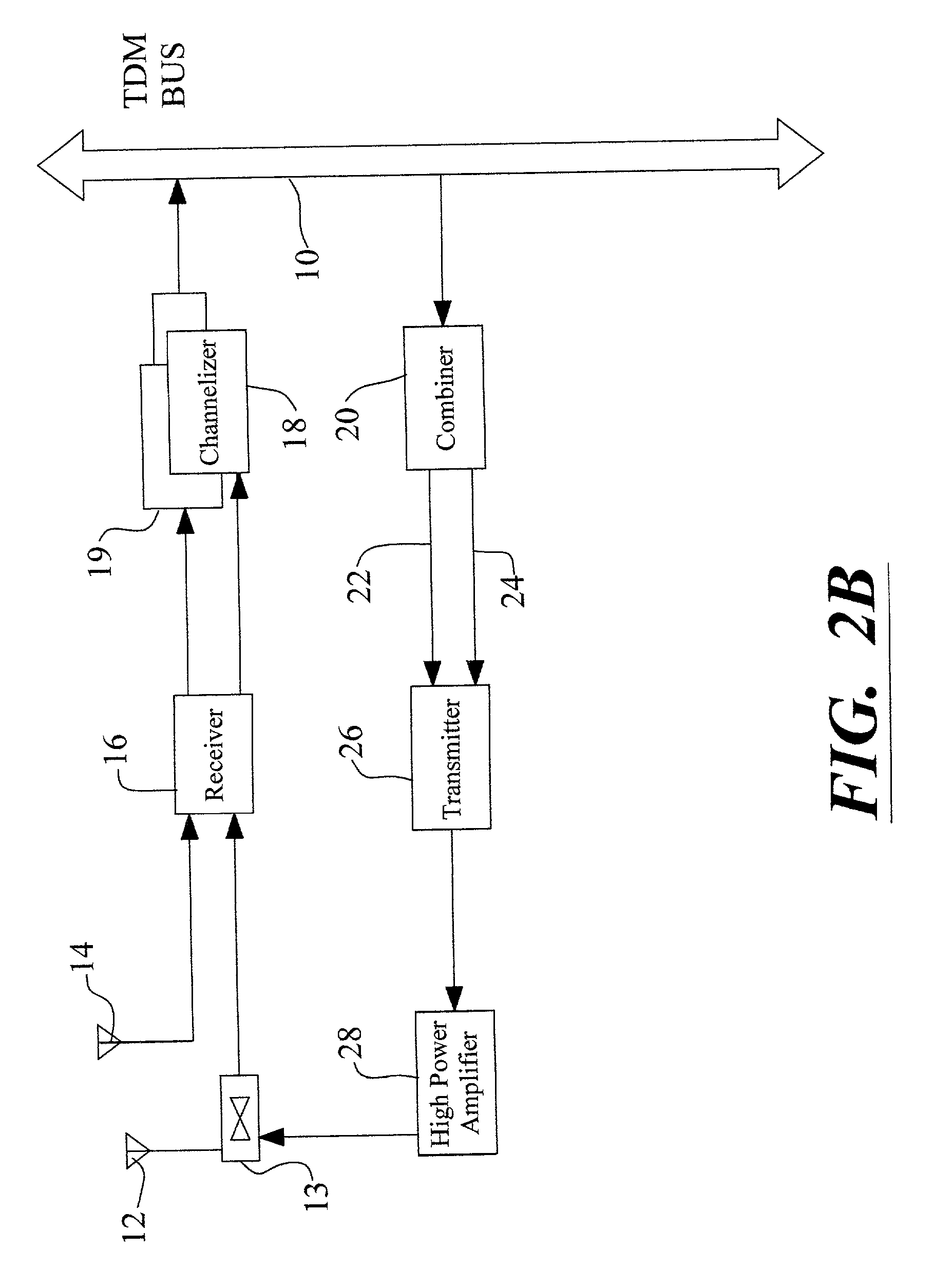Sectorized cell having non-redundant broadband processing unit
a technology of non-redundancy and processing unit, applied in the field of wireless communication systems, can solve the problems of only a fixed number of service providers, increase the complexity and expense of base stations, and achieve the effect of reducing the cost of base stations
- Summary
- Abstract
- Description
- Claims
- Application Information
AI Technical Summary
Benefits of technology
Problems solved by technology
Method used
Image
Examples
Embodiment Construction
[0023] The geographic disbursements optimizes service coverage with the entire bandwidth (e.g. 12 MHz) available to the service provider, and ensures non-interfering coverage among dispersed cell sites. Over a broad geographical area however, the frequency allocation within respective cells and the separation between adjacent cell sites may be prescribed to effectively prevent mutual interference among any of the channels of the system. Thus, frequency reuse is the core concept of cellular communications. A rule of thumb in the cellular industry states that a channel can be reused again in every seven cells. The application of this rule varies due to the factors that determine the size of a cell and the propagation of cellular transmissions such as the particular terrain, the degree and density of urban growth, the expected number of subscribers, etc. Since a system operator cannot add channels to their system--each system is limited to 400 channels--frequency reuse schemes are ofte...
PUM
 Login to View More
Login to View More Abstract
Description
Claims
Application Information
 Login to View More
Login to View More - R&D
- Intellectual Property
- Life Sciences
- Materials
- Tech Scout
- Unparalleled Data Quality
- Higher Quality Content
- 60% Fewer Hallucinations
Browse by: Latest US Patents, China's latest patents, Technical Efficacy Thesaurus, Application Domain, Technology Topic, Popular Technical Reports.
© 2025 PatSnap. All rights reserved.Legal|Privacy policy|Modern Slavery Act Transparency Statement|Sitemap|About US| Contact US: help@patsnap.com



